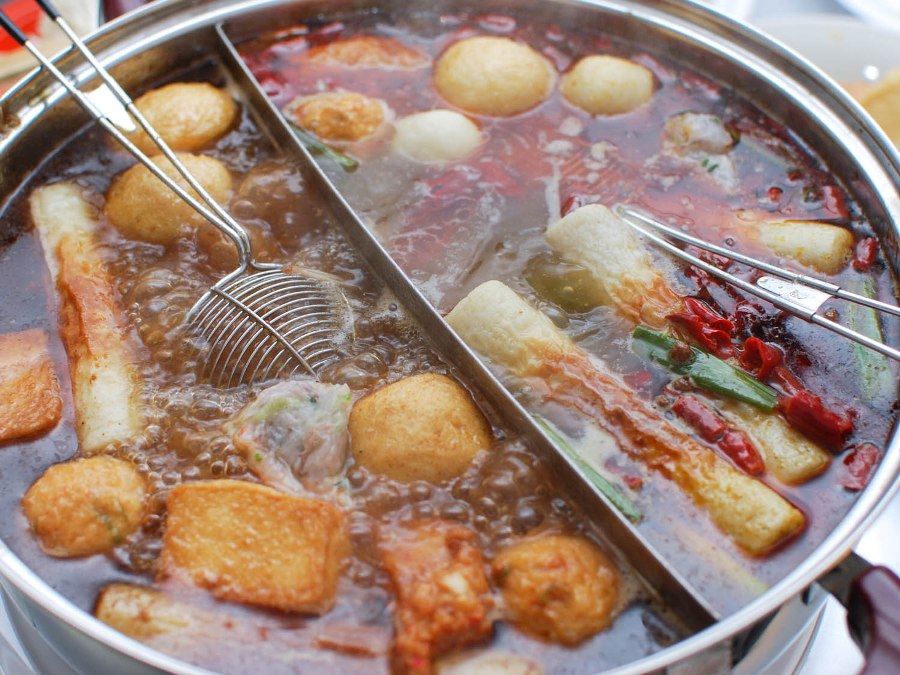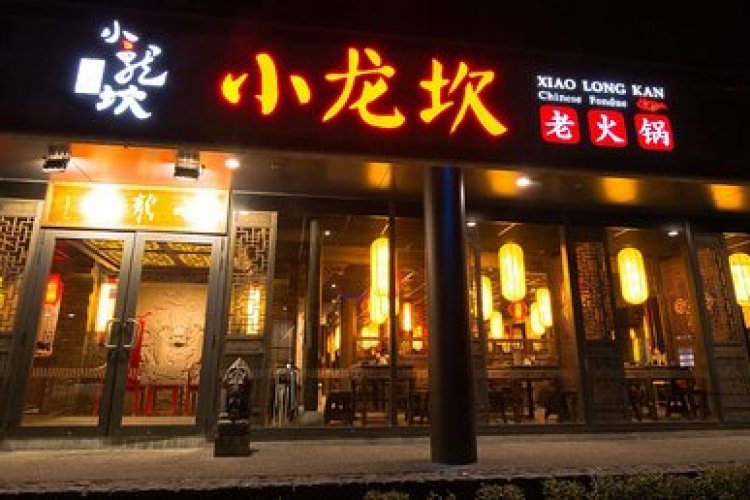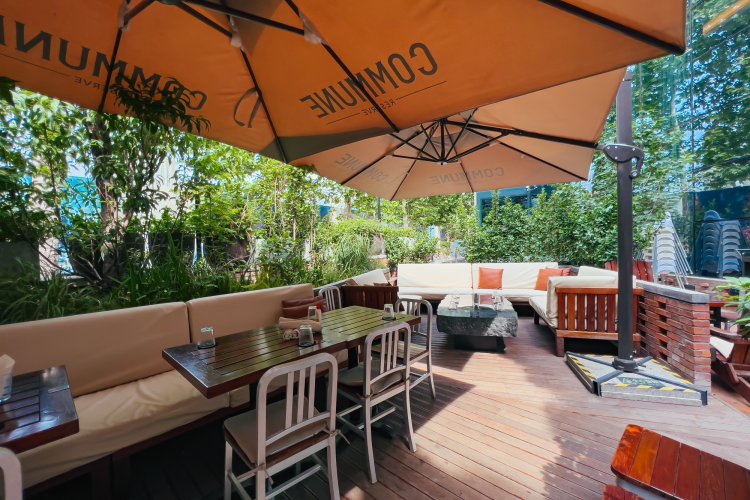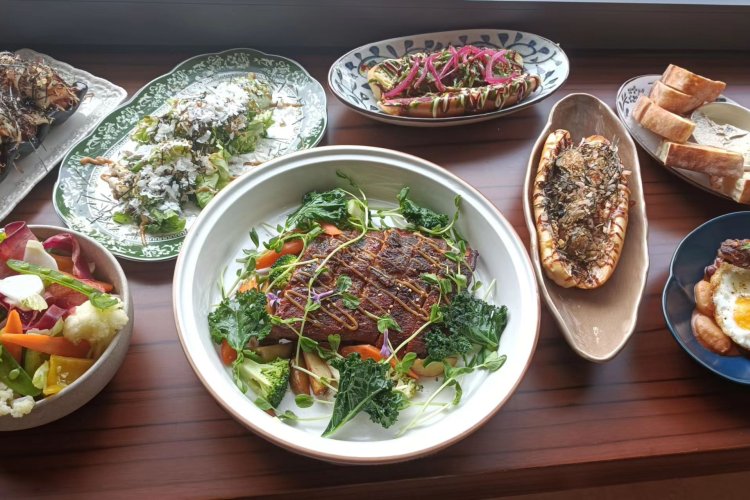Bubbling Over: Exploring Beijing's Many Hot Pot Options
As the colder months swing around, Beijingers are bound to literally gather round the fire for everyone's favorite keep-warm dinner known as hot pot. However, hot pot in the Haidilao vein may bring to mind images of sweating and frequent trips to the loo, and while we're also not saying that you should give up on Sichuan-style hot pot altogether, there are plenty of alternative hot pot options out there for those who value their digestive system, so we thought we'd explore some of the other hot pot options available in Beijing, from fragrant Yunnan, to off-the-wall Korean.
Beijing Shuan Rou
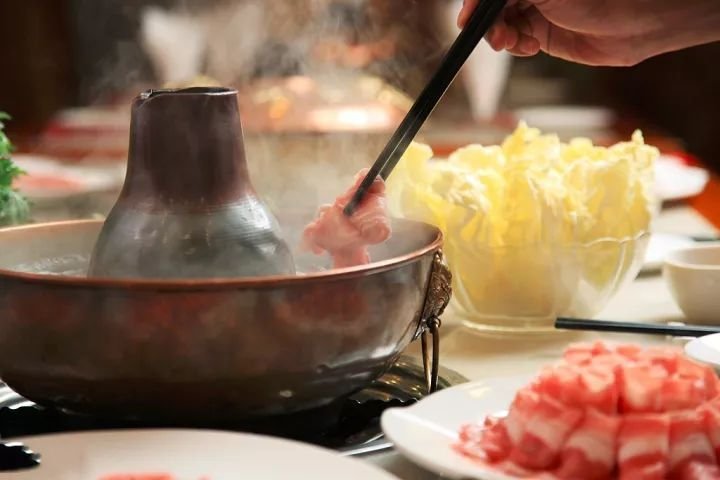
We would be remiss to round up all the hot pots that you can enjoy in the capital without bringing up a Beijing classic, 涮肉 shuàn ròu. Often but not always enjoyed in movie-esque witch-hat shaped pot, its focus is on the best part of hot pot, the meat. Rather than letting the thin meat strips sit in the pot for a few minutes, diners simply swish them in the boiling water for a few seconds using chopsticks before dipping it in their sesame sauce bowl.
Yunnan mushroom hot pot

The many fragrant herbs and spices of Yunnan cuisine are put to good use in the broth at Xiangcao Xiangcao Yunnan Hotpot, which is available in up to five spicy and non-spicy variants. The mushroom soup is good enough to be drunk by itself, which you are encouraged to do. Yunnan cuisine is also well-known for its mushrooms; Xiangcao Xiangcao flies theirs in direct from Yunnan, which, along with the wide array of tofu options, makes it a good choice for vegetarians.
Coconut chicken hot pot
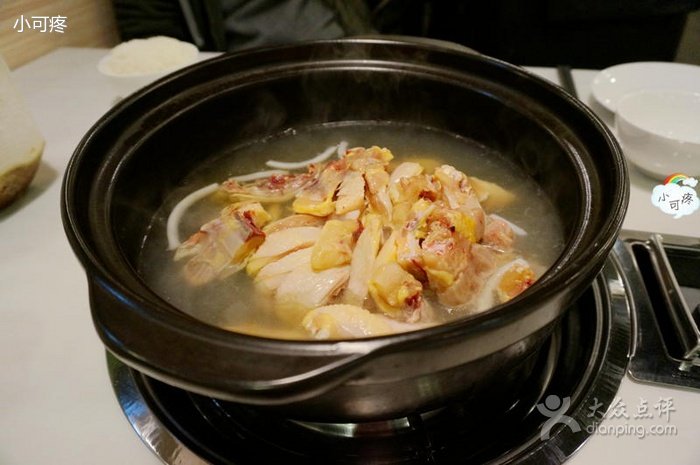
Chicken doesn't often make a showing at standard hot pot dinners, making chicken-specialists Pengran Siji a boon for fans of the bird. Pengran Siji specializes in coconut chicken hot pot. A whole, jointed chicken is simmered in a Hainan-style soup base made with coconut water, then the cooked chicken is dipped in a sauce of chili, soy, and calamansi. A light and fresh alternative to Sichuan hot pot and the location on the east Third Ring Road is very practical.
Japanese shabu shabu

Of the range of hot pot-like dishes known collectively as nabemono, shabu shabu is most akin to hot pot as we know it in China – it is name after the swishing sound made when thin cuts of meat are swept through hot broth for a few seconds at a time. Okra's version of this traditional Japanese-style hot pot comes with black fin tuna, kanpachi, salmon, scallop, white fish, natural Chilean wagyu beef, seasonal organic vegetables, onsen tamago (slow-cooked egg), and udon noodles, all designed to be dipped into the steaming broth (RMB 248). Luxurious eaters can upgrade to a set featuring black fin tuna and toro, and Chilean wagyu beef for RMB 448.
Korean jeongol / jjigae

Jeongol refers to a type of elaborate soup or stew in Korean cuisine. Jeongol are similar to the popular Korean stews called jjigae, with the main difference being that jjigae are usually named after a single ingredient (such as kimchi jjigae or sundubu (soft tofu) jjigae), while jeongol usually contain a variety of main ingredients, such as seafood. Unlike Chinese-style hot pot, the ingredients are presented at the table already in the pot and then heated on a gas burner, rather than being dipped in the base individually. Some of our favorites include budae jjigae, or 'army base stew' – read more on that here in our review of Wangjing's Barsak restaurant – and glutinous rice cake hot pot (niangao huoguo), with the rice cakes cooked in a spicy soup. City-wide chain Huoluhuo is the most popular place to sample this dish.
READ: Bird on the Fly: Where to Grab a Turkey for Your Thanksgiving Table
More stories by this author here.
Email: robynnetindall@thebeijinger.com
Instagram: @gongbaobeijing
Twitter: @gongbaobeijing
Weibo: @宫保北京
Photos: Sohu seriouseats.com, pixabay.com, Dianping.com, Okra

